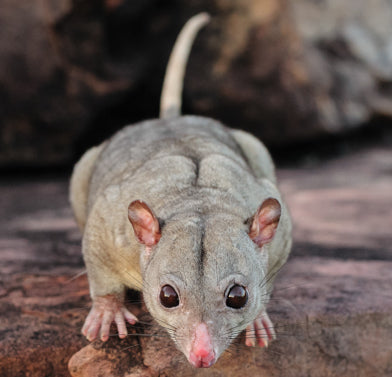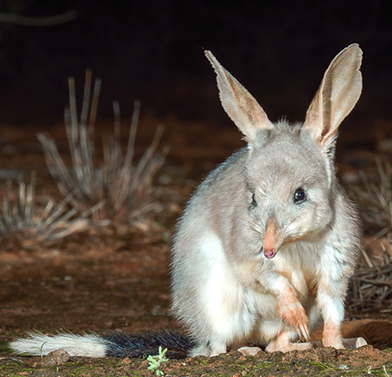Part 1: "Undermined: Tales From The Kimberley" - A Story of First Nations’ Land and Communities Under Threat

Still of The Kimberley Coast. Courtesy of MIFF, 2018.
“Not only are our mineral resources like gold being exploited, our fundamental resource, water, has now become a critical threat. And I think at the rate of our government trying to introduce a lot of this industrialisation, Indigenous people are not really getting an opportunity to understand how it’s going to consequently affect them in the long term.” - Albert Wiggan, Bardi-Kija-Nyul Nyul Traditional Owner, 2018.
The Kimberley region of North Western Australia - covering an area of 420,000 square kilometres and a population of less than 40,000 - is one of the world’s last wilderness frontiers, and it’s under serious threat (Australia.com, 2021). With the industries of oil, gas, mining, fracking, and agriculture driving an unprecedented land grab, what will remain of the 200 plus remote Aboriginal communities existing in the Kimberley? The 2018 documentary “Undermined: Tales From the Kimberley” - produced by Screen Australia and created in association with the Melbourne International Film Festival (MIFF) Premiere Fund - investigates the politics surrounding this draining of the Kimberley’s natural resources and the limitations of Indigenous land rights in regards to this issue. The documentary takes viewers to several locations in the Kimberleys, and introduces them to the stories of young Nyul Nyul and Bardi Traditional Owner Albert Wiggan, Bunuba Traditional Owner and Station Manager Kevin Oscar and Elders June Davis and Alfie White, and their uphill battles to protect their homelands (MIFF, 2018). Ultimately, this documentary poses the question (Poelina, 2018): for whose benefit is this development?
The Kimberley Ecosystem
The Kimberley region is recognised as one of the world’s most ecologically-diverse areas, with landscapes from weathered sandstone escarpments, to tropical woodlands, to freshwater wetlands, to coral reefs and savannas (WWF, 2017). The coastline extends northeast from Eighty Mile Beach all the way to the border of the Northern Territory, and its tropical waters stretch 200 kilometres west into the Indian Ocean (PEW, 2020). The Kimberley coast is one of the largest regions of untouched wilderness in the world and is listed as a National Heritage location. Director of Environs Kimberley, Martin Pritchard (2018), highlights the significance of this ancient landscape:
“The Kimberley coast was recognised by scientists as being in the top four percent of the most intact coastlines on the planet. And, the savanna is part of the largest tropical savanna on the planet.”
Western Australia’s Kimberley region is home to some 65 species unlike anywhere else on Earth, and its tropical waters are one of the last largest refuges for many endangered species. These waters refuge: six of the world’s seven species of endangered marine turtles, the world’s largest nursery of humpback whales, and Australia’s endemic dolphin species of the humpback dolphin and the snubfin dolphin. The Kimberley’s coral reefs also have a greater diversity of coral species than the Great Barrier Reef, thus making them of global significance (The Kimberley Like Nowhere Else, 2021).

 The Kimberley is a refuge for Australia’s endemic and threatened species of dolphin: the snubfin dolphin. Courtesy of The Kimberley Like Nowhere Else, 2021.
The Kimberley is a refuge for Australia’s endemic and threatened species of dolphin: the snubfin dolphin. Courtesy of The Kimberley Like Nowhere Else, 2021.
On land, the Splendid Tree Frog, scaly-tailed possum and the Kimberley mouse are native, and the Greater Bilby, Golden Bandicoot and Gouldian Finches find refuge here (WWF, 2017).

Scaly-tailed possum, found in northwestern Australia, restricted to the Kimberleys. Courtesy of Alex Hartshorne/Australian Wildlife Conservancy (AWC), 2021.

Greater Bilby: common throughout the arid and semi-arid regions of the Australian mainland. Courtesy of Wayne Lawler/Australian Wildlife Conservancy (AWC), 2021.
This Country and its inhabitants have been the spiritual and cultural home to First Nations peoples for millennia. The stories and ecological knowledge of the Traditional Owners have been recorded in tens of thousands of rock art sites across the ancient Kimberley landscape. Currently, 34 different language groups or nations exist in the Kimberleys, and approximately half of the Aboriginal population live across 200 remote communities, varying in size from 20 to 900 people (Undermined film, 2018).
Check out the trailer of “Undermined: Tales From The Kimberley” below! Courtesy of MIFF, 2018.
Warning: Aboriginal and Torres Strait Islander readers should be aware that this documentary may contain footage or names of people who have since passed away.
Keep your eyes peeled for Part 2 of this series, focussing on the social justice issues surrounding Native Title!






